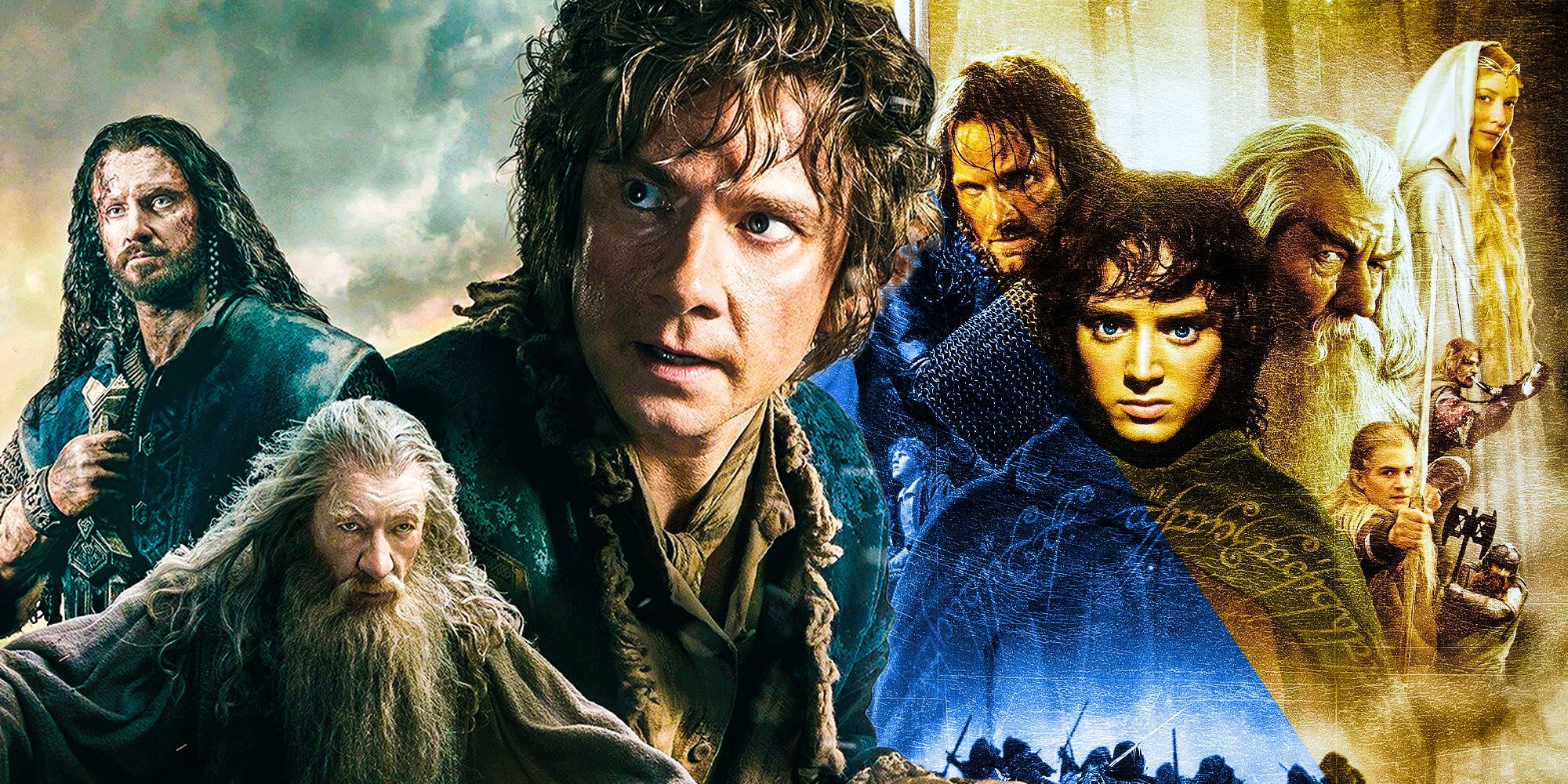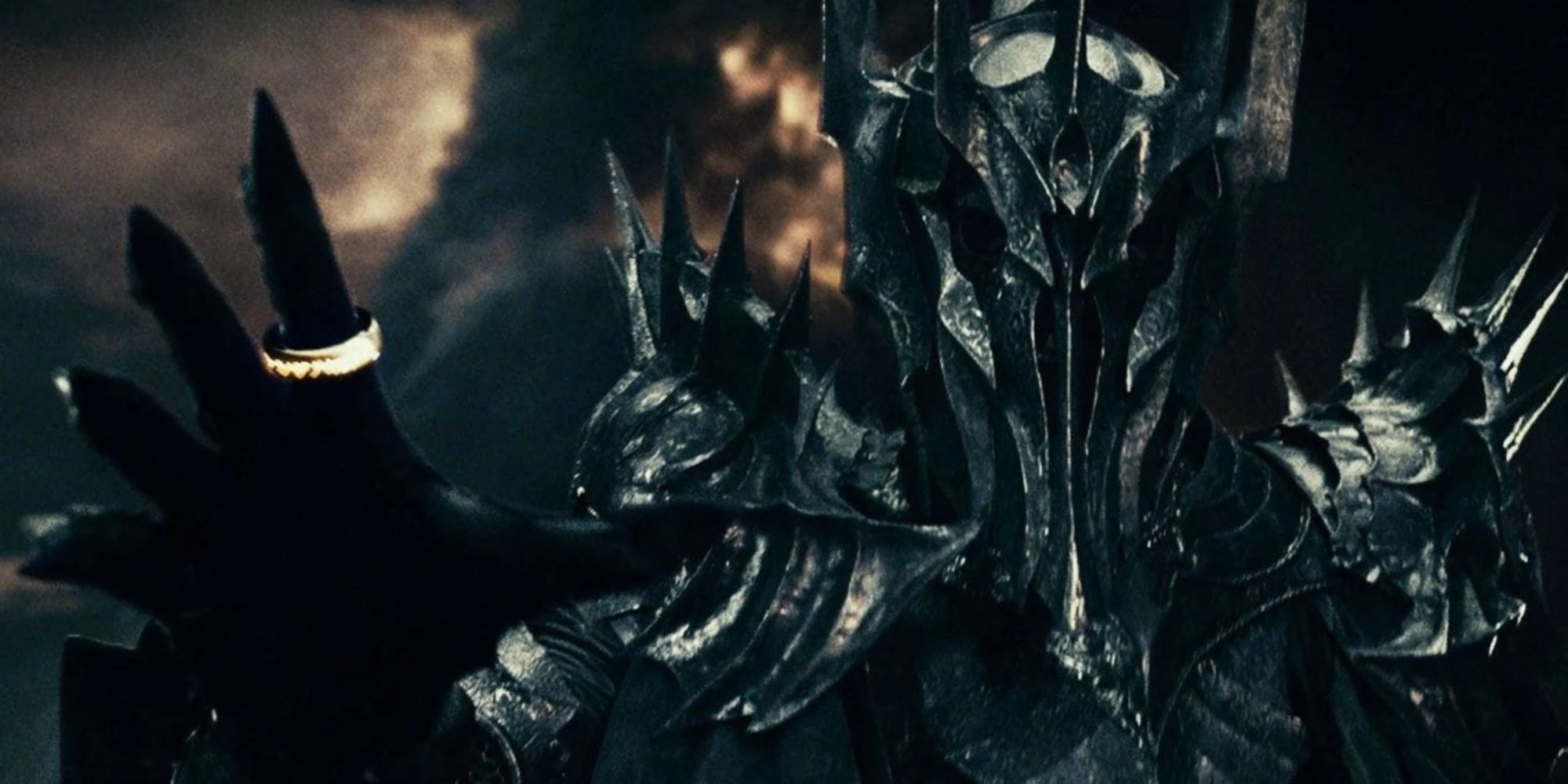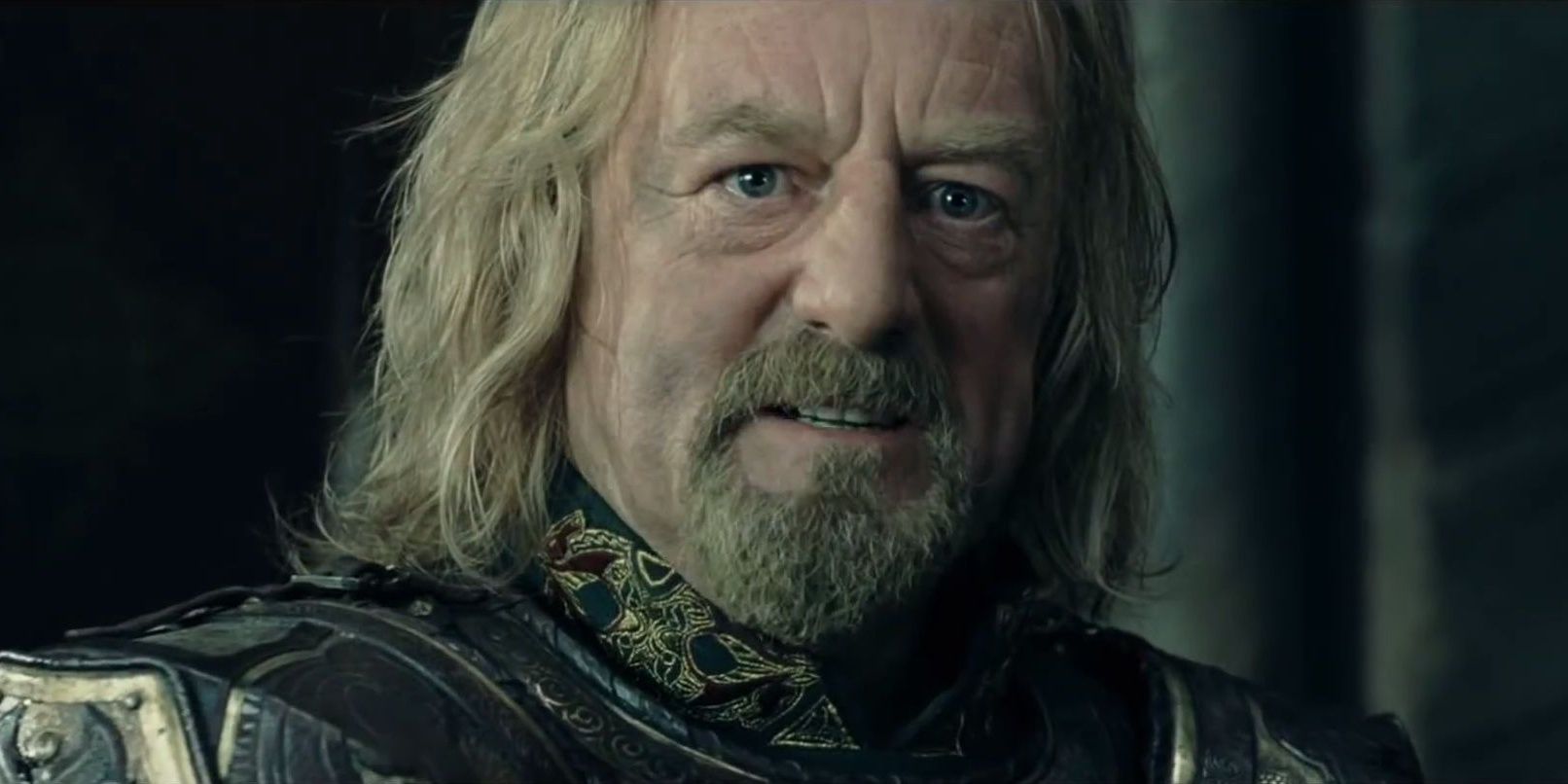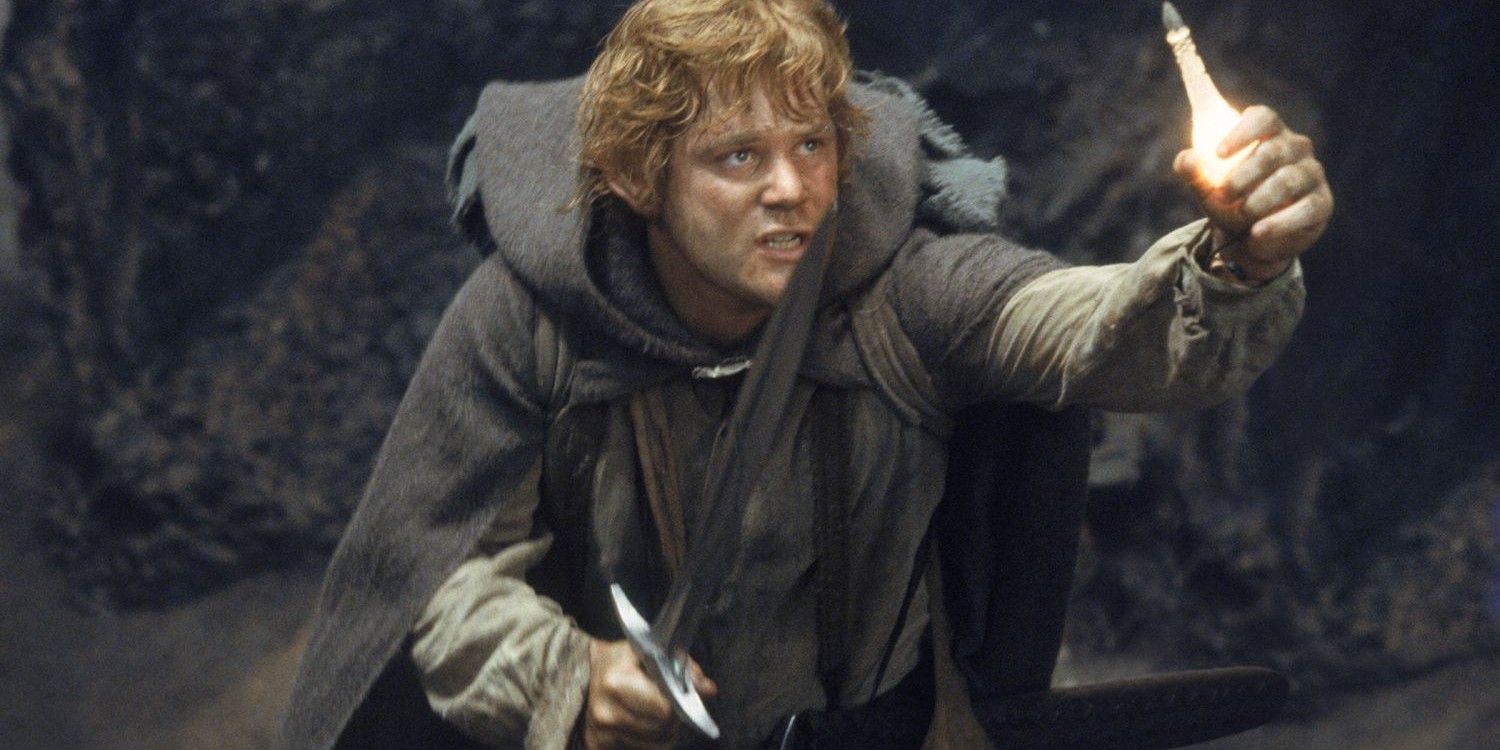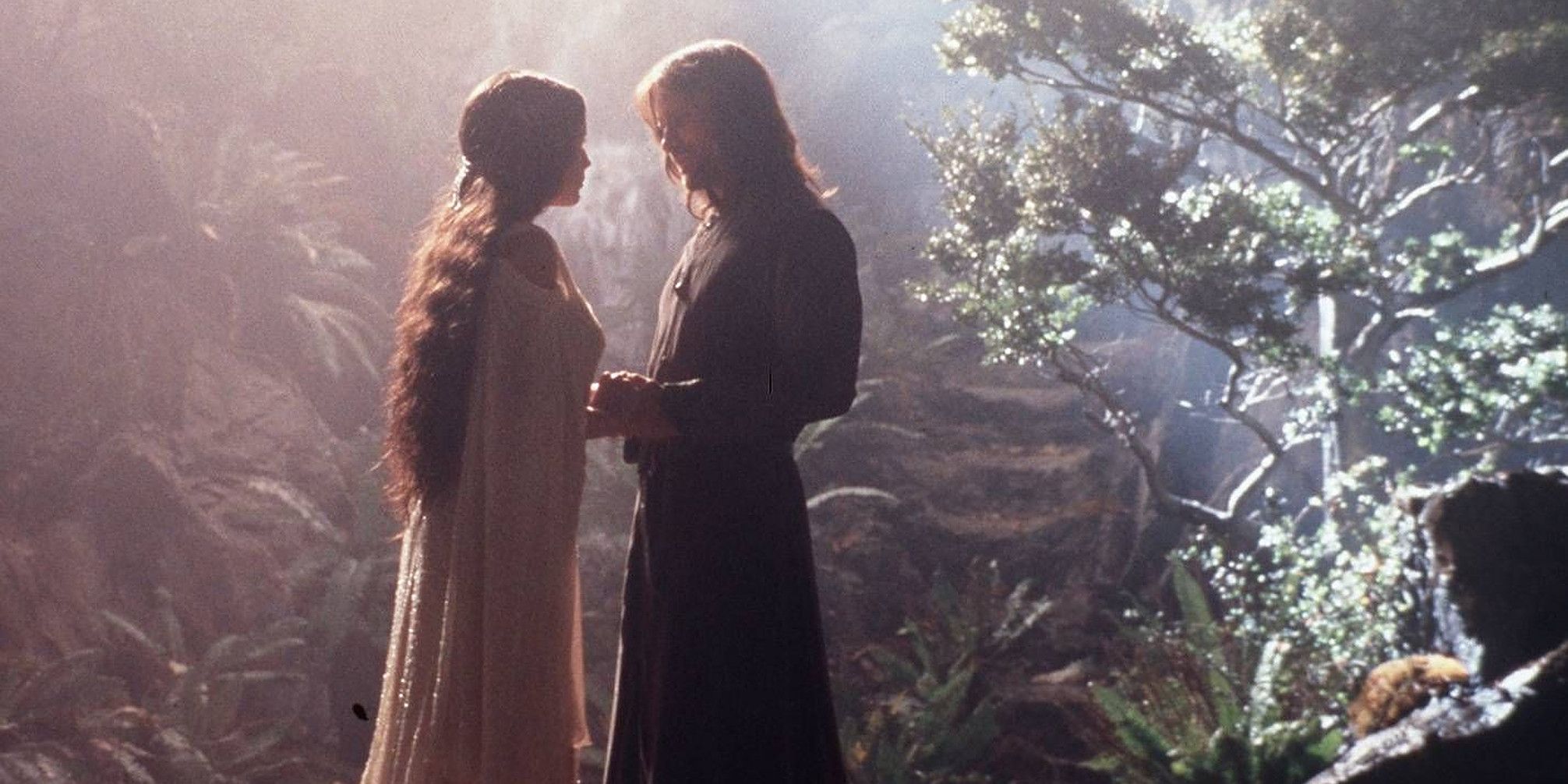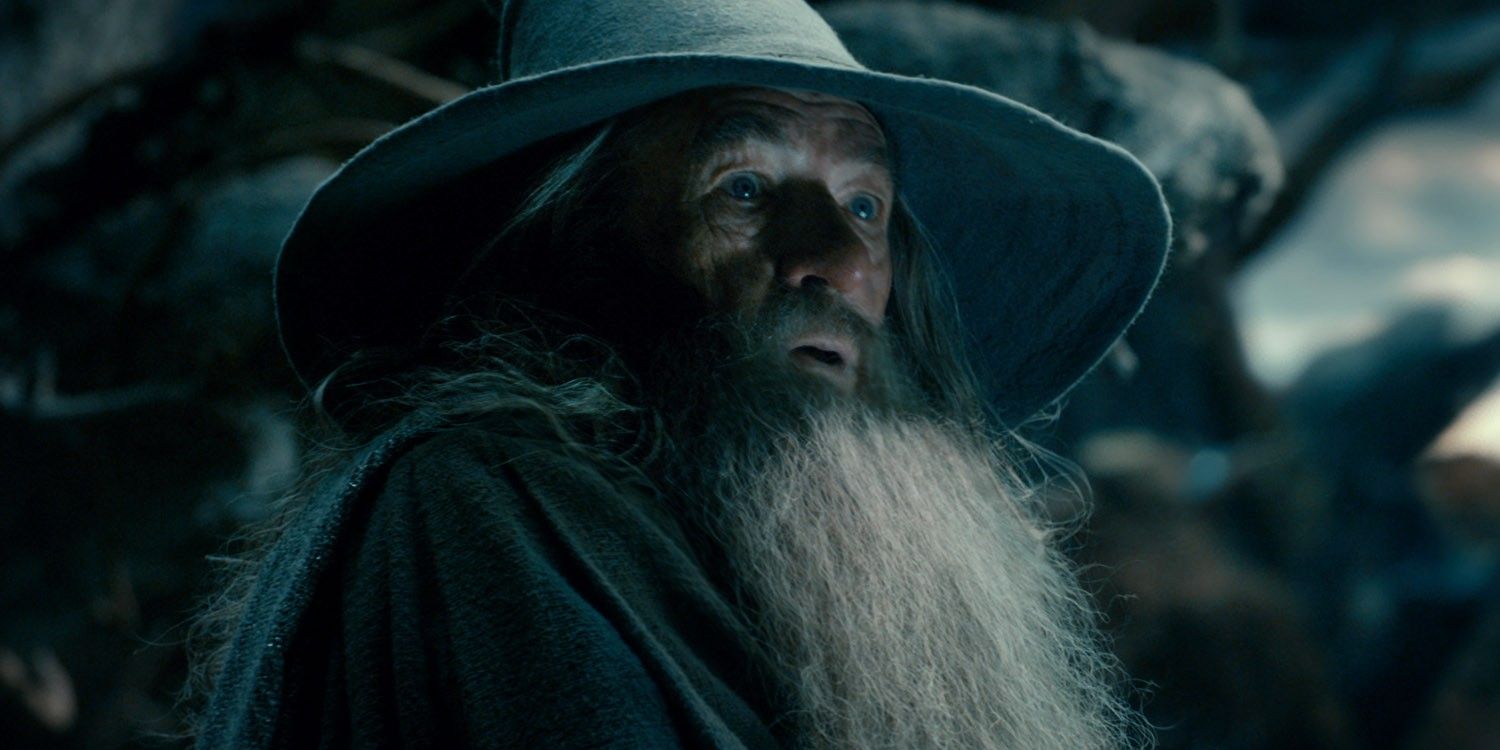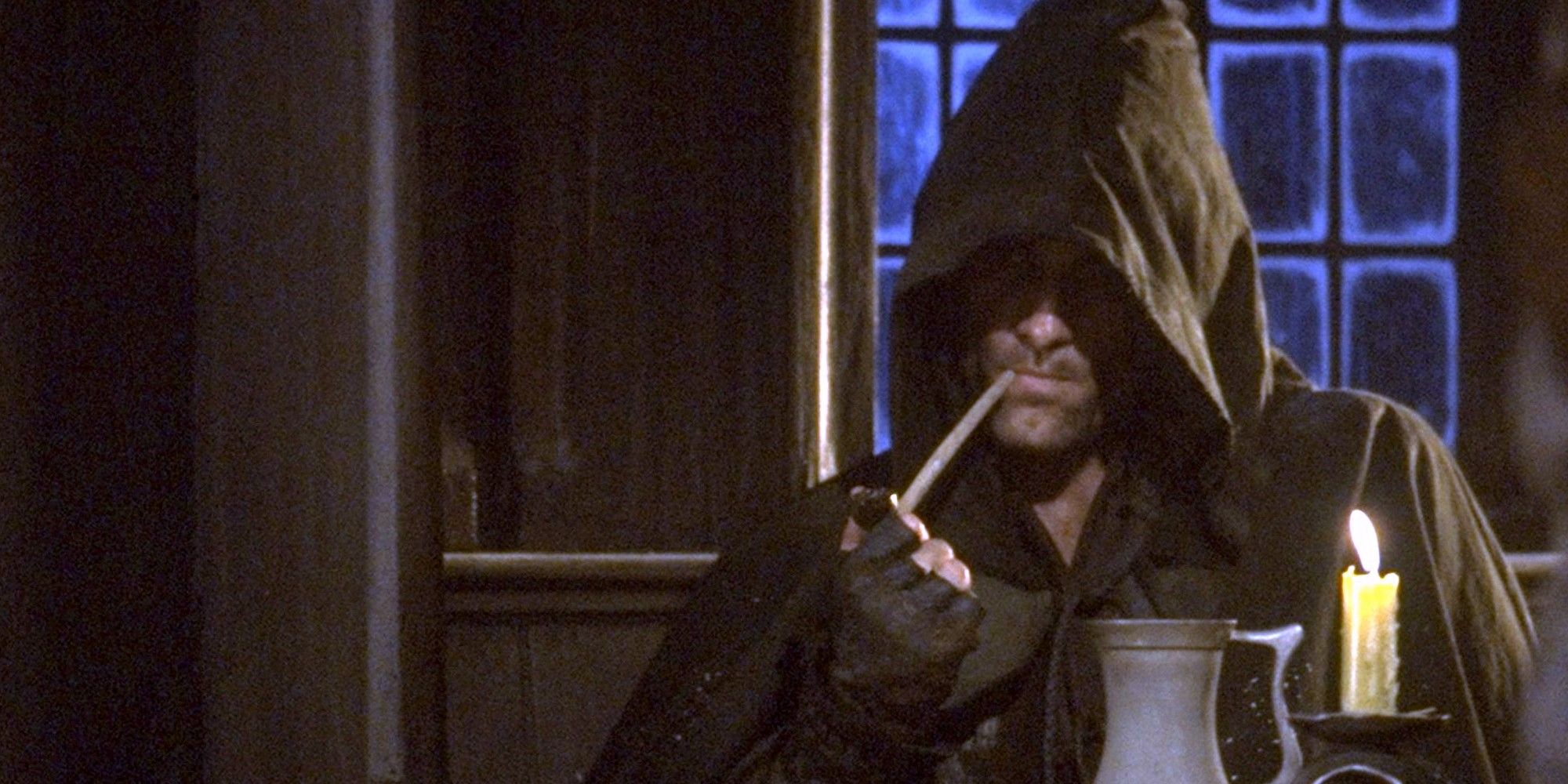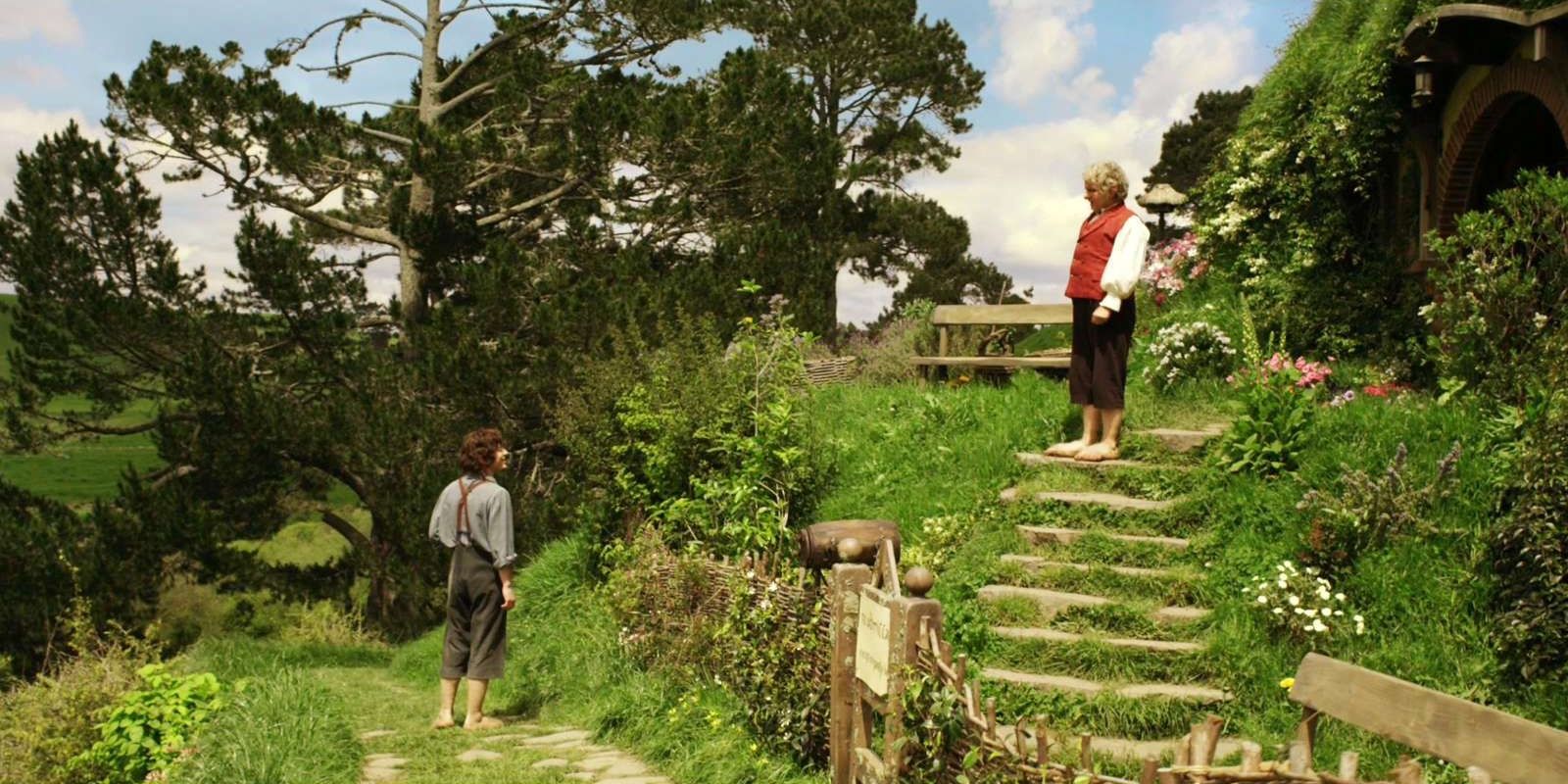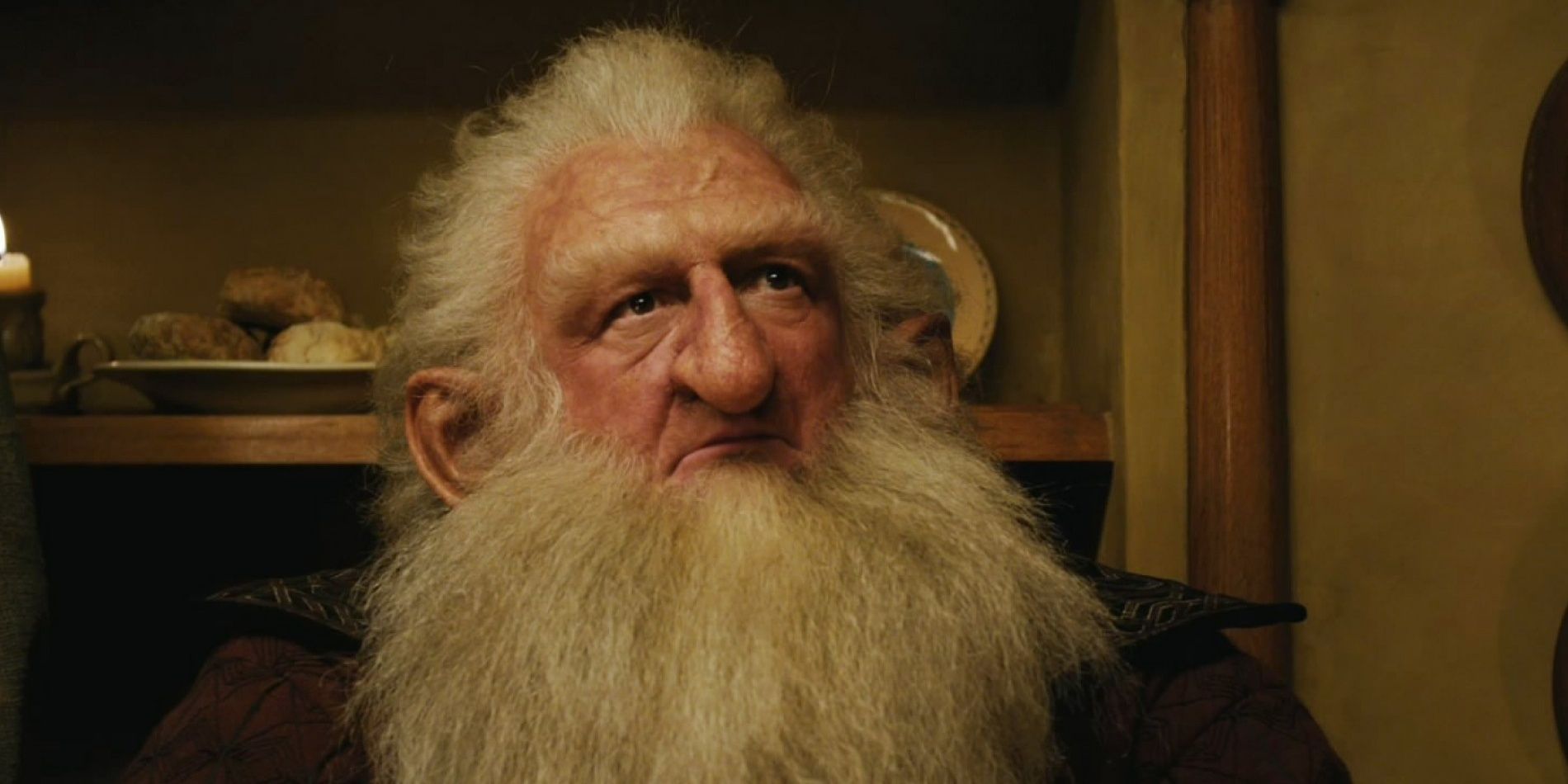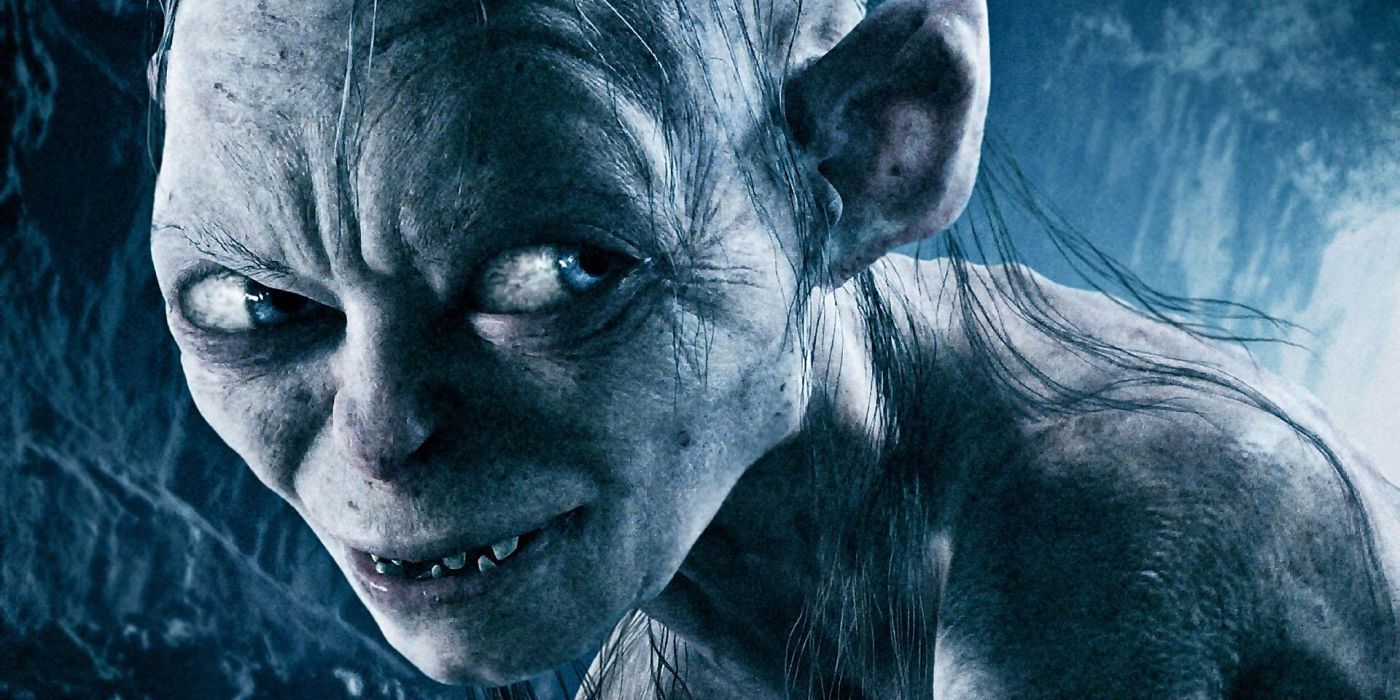Here's every major event that occurs between The Lord of the Rings and The Hobbit. Although Peter Jackson's movie trilogies went in reverse order à la Star Wars, J.R.R. Tolkien's The Hobbit was first published in 1937, telling the story of Bilbo Baggins, who bravely left The Shire alongside a company of Dwarves to steal ancient treasure from a dragon dwelling in the halls of a mountain. The Lord of the Rings followed in 1954, picking up the history of Middle-earth some 60 years later when Bilbo is an old man (eleventy-one, to be precise), and the attention is shifted onto his nephew, Frodo.
Those 60 years are seldom mentioned in Lord of the Rings, since all the necessary history lessons (such as the forging of the Rings, and Sauron's defeat) hail from a far earlier age. Of course, that isn't to say the era between Bilbo Baggins' return to The Shine and his final birthday farewell was unimportant. Transpiring in the background were events that ultimately came to shape the future of Middle-earth, adding more context to the battle against Sauron and the frantic search to locate the One Ring.
Digging into Tolkien's wider works and allusions made in the Lord of the Rings trilogy, these are the most significant happenings in the gap between The Hobbit and The Lord of the Rings.
Darkness Falls Over Mordor (Again)
As depicted in the Hobbit movie trilogy (and referenced ever so briefly in the original book), Gandalf was rather busy during Bilbo Baggins' quest to liberate the Lonely Mountain's gold. The wizard convened the White Council alongside Galadriel, Elrond and Saruman, with help from Radagast, and attacked the mysterious "Necromancer" dwelling in the shadows of Dol Goldur - an ominous presence Gandalf had long suspected to be the returning Dark Lord, Sauron. Still recovering from his last defeat, Sauron was ejected from his forest abode, but Dol Goldur was only ever a means to an end, and the villain soon resurfaced in his traditional stronghold. Sauron sneaked back into Mordor shortly after Bilbo's return to The Shire at the end of The Hobbit, and spent another decade, more or less, consolidating his forces and renewing his strength before declaring war.
While haunting Dol Goldur, Sauron had been preparing Mordor for his eventual arrival, and the guard placed around the realm at the onset of the Third Age slackened due to man's complacency. Barad-dûr was rebuilt, Mt. Doom reawakened, and grotesque soldiers were bred. The Corsairs of Umbar immediately announce their allegiance to the Dark Lord, honoring their Númenoean ancestors' from the Second Age.
New Kings Are Crowned
In happier news, the 60-year gap between The Hobbit and The Lord of the Rings saw many familiar faces ascend to their respective thrones. Following the Battle of Five Armies, Bard (played by Luke Evans on the big screen) returned to Dale, the home of his ancestors destroyed by Smaug many years prior. Dale was rebuilt, Bard became king, and the area prospered under his watch, keeping friendly relations with the mountain's Dwarves and the folk of Lake-town, where Bard once lived. Bard is succeeded by his son, Bain, before Lord of the Rings begins.
Théoden of Rohan is a busy man in the years following The Hobbit. The future king is born near the beginning of the time jump, and crowned 32 years later following the deaths of his grandfather and father in relatively quick succession. It would be another 30 years or so before Saruman's scheming in Rohan began, and the good king was corrupted. Though not strictly a king (but try telling him that), Denethor II took his father's place as the Steward of Gondor 17 years before Bilbo's birthday party.
Important Births
During Tolkien's six-decade void, most of The Lord of the Rings' main players would be born into the world. Bilbo Baggins returns to The Shire in year 2942 of the Third Age; Théoden, future king of Rohan, is born six years later in 2948, then Frodo in 2968. Boromir arrives a decade later, quickly followed by Sam Gamgee in 2980 and Merry in '82. Denethor's second-favorite son, Faramir, is born in the year 2983, before the Fellowship's youngest Hobbit, Pippin, in 2990. Finally, two children of significance were birthed in Rohan - Éomer in 2991 and Éowyn in 2995.
Aragorn's Training & Engagement
Unlike most of the Fellowship, Aragorn is born shortly before the events of The Hobbit, his arrival predating Bilbo's quest by a decade or so. The important milestones of Aragorn's backstory, however, all transpire between The Hobbit and The Lord of the Rings. First, the young boy is informed about his true heritage, and the reason he was raised within the secure defenses of Rivendell. Resolving to learn more of the world, hone his skills, and pay his dues, Aragorn adopts the alias of Thorongil, and secretly fights for both Rohan and Gondor against the growing forces of Sauron, before eventually earning a reputation as Strider the ranger while prowling around The Shire. Fortunately, Aragorn's early years weren't entirely comprised of sword fights and sentry duty, as he and Arwen agreed to one day be married.
Aragorn Meets Gandalf
Not long after emerging from the haven of Rivendell, Aragorn's fateful first meeting with Gandalf took place. Aware of his secret lineage, Gandalf recognized Aragorn as a key ally in the war to come, and the race of men's best hope for a prosperous future in Middle-earth. Aragorn's rangers proved vital in keeping watch on key locations, and kept the grey wizard abreast of the enemy's movements.
The Guarding of The Shire
Gandalf becomes aware of Bilbo's magic ring during their journey together in The Hobbit, but doesn't immediately suspect it's the fabled Ruling Ring of Sauron. After all, the Elves forged many Rings of Power under Sauron's influence, and the One was supposedly long lost, according to the ever-trustworthy Saruman. In his wisdom, however, Gandalf refused to be complacent, remaining vigilant in The Shire and Bilbo in particular. During his visits, Gandalf's unease deepened, as the pull of the magic ring on his Hobbit friend became all too clear. Sensing something was amiss, Gandalf requested Aragorn that the Dúnedain rangers guard The Shire and report back any dark movements. Though their presence is invisible in Lord of the Rings, the rangers prevented Saruman from probing The Shire earlier, but proved no match for the Ringwraiths after Sauron learned the Baggins name and made for Hobbiton.
Frodo's Parents Die
Frodo's parents are barely mentioned in Lord of the Rings; it's simply enough to know that he lives with his eccentric uncle, and that's that. Born over 20 years on from The Hobbit, Frodo is orphaned at 12-years-old when his father, Drogo Baggins, and mother, Primula Brandybuck, were boating in the Brandywine River of an evening and both tragically drowned. Without witnesses, the cause of the fatal incident remains unknown, but Hobbits are prone to gossip, and maintain that either Drogo's excessive weight sank the couple's vessel, or both died as a result of a murder attempt by Primula. Young and alone, Frodo is taken in by his uncle - a decision that would one day affect the entirety of Middle-earth.
The Dwarves' Expedition To Moria
Away from the fated events concerning The Shire and the One Ring, a key chapter in the history of the Dwarves occurred between The Hobbit and Lord of the Rings. After successfully reclaiming the Lonely Mountain, the Dwarves sought to repopulate the abandoned Mines of Moria, which were at that time completely overrun by orcs. Led by Balin of The Hobbit with Óin and Ori also tagging along, the expedition started promisingly, and the Dwarves made camp in Moria for several years, clearing out a good number of the orcs hiding within. But Balin's company underestimated the sheer number of foul creatures populating Moria and had no idea about the Balrog resting at the bottom. Ultimately, every Dwarf perished and Moria was consigned to darkness until the arrival of the Fellowship and the defeat of the Balrog 24 years later.
The Capture of Gollum
Aside from protecting The Shire and keeping an eye on Sauron, Aragorn and Gandalf's most significant pre-Lord of the Rings endeavor would be conspiring to snare the creature known as Gollum. As his suspicion of Bilbo's ring grew, Gandalf wanted to learn more about its origins, and asked Aragorn to track down the previous owner. Aragorn succeeded, of course, and the wizard questioned Gollum extensively. Though the corrupted Hobbit knew little of the Ring's true importance, Gandalf discovered that Sauron had extracted Bilbo's name and location, and would inevitably be knocking on Bag End in the near future, prompting his hurried return to The Shire and the iconic fireplace test. Gollum, meanwhile, remained in the custody of Elves for almost a decade before making his escape.
Aragorn nabbing Gollum actually takes place after the 60-year time skip, but still before Frodo's departure from The Shire, and this ambiguity is caused by Peter Jackson's translation from written word to the big screen. In Tolkien's original works, The Fellowship of the Ring begins with Bilbo's birthday party and relinquishing the Ring to his nephew, but another 17 years pass before Frodo sets off on his adventure. In Jackson's adaptation, this 17-year leap is glossed over, implying that Gollum was captured some time before the film's events. In truth, Gandalf's interrogation of Gollum occurs 8 years after Bilbo's party, but 9 years before Frodo's The Lord of the Rings quest as the Ring-bearer.

